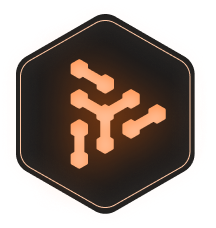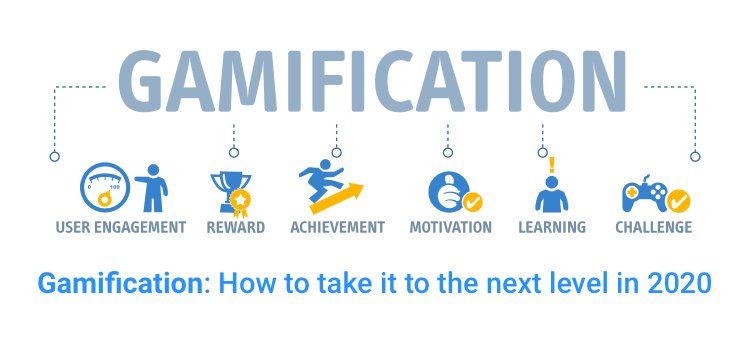Gamification is a process where we add game-like characteristics to an existing products & services. Those game-like characteristics have a real potential to change the users perception of the product, and solve difficult business challenges, but also increase productivity, studying, medicinal treatments, employee engagement (such as organizing e-sport events for employees), psychological therapies and much more.
In this article we will show you some of the examples of gamification in digital and physical world, but also show you the underlying principles of gamification and reveal how it affects people on psychological level.
The creation of gamification
The history of gamification is reaching long before the creation of the modern internet, and one of the first examples dates back to 1912. when an american popcorn brand "Cracker Jack" started to put free award in their popcorn bag, which is not an application of gamification in a modern sense, but using the elements of fun to change buyers behaviour is certainly one of the examples of gamification.
One more example of gamification can be found in Boy scouts. At the beginning of 20th century Boy scouts started to get badges for their achievements. Badges have contributed towards increasing competitiveness among the Boy scouts. It can be argued that this badge-award system is taken from a military ranking system, and adjusted to suit a Boy scout groups. This military system drives it's roots from an antic Greece, when soldiers got promoted for their achievements, which were cruical for them in order achieve a better status in a militay hierarchy.
First more concrete examples of gamification are dating from 1980's when academics recognized the full potential of gemification. Gamification was considered to do very well for a commercial & other purposes.
Elements of gamification
Gamification has to be carefully designed. It will initiate a fun for user, but fun has to be carefully constructed. The company fostering gamification has to consider the elements of gamification which will drive the users behaviour.
There are 3 key elements of gamification: Dynamics, Mechanics & Components.
Dynamics determine the fundamental principles of gamification, and set what we want to achieve with gamification. The components of dynamics are: Fun, Emotions, Narrative, Improvements & Connections. Those are underlying principles & goals we want to achieve with gamification.
Mechanics provide the surroundings where the components will be built in. Mechanics is the link between Dynamics (the conceptual image of gemification) & Mechanics (the concrete elements of gamification). Mechanics is an implicit structure of gamification, and it consists of activators such as awarding, challenges & terms the "gamer" will have to fufill in order to achieve results.
Components are the last part of gamification and they are visible to users, and they form the most tangible elements for the user. There are a lots of components that are used in gamification, but some of the most notable ones are PBL's (points, badges, & leader boards). The other ones are such as quests, collections, achievements, boss fights, gifting, teams, virtual commodities, leader boards, etc.
Examples of gamification in physical & virtual world
Gamification's goal is to make an action easier for the people. People have been wanting to ease up their actions since the dawn of the time, and this is what has driven innovation, among with fear & desire to survive. People often created their own games in order to make a job look & feel easier. In the modern era, gamification is not only used to make a work feel easier, but also in many different scenarios.
One of the examples in the physical world is "Piano stairs" where cities have put a pressure sensors on the stairs, and whenever a pedestrian presses it, it releases a sound. Basically, you play piano as you walk. These stairs have seen a 50% increase of usage after the makeover, leaving the boring, automatic stairs behind, when it comes to their usage.
Another very notable real-life gamifaction example is "Highway lottery", where people who drive under the speed limit enter the prize pool to win cash. That cash came out of the pocket of those who crossed the speed limit.
There are many digital examples of gamification. Let's look at the Starbucks example. The people who install the Starbucks app have loyalty points, levels, awards for task solving & interaction with an app. When user crosses to next level, they get bigger discounts for their purchase.
7 of the Best Examples of App Gamification | CleverTap
How Gamification motivates people?
When we look at the gamification, we have to observe it within the whole user experience the particular site creates. We already described how gamification can improve a particular product, but we also have to know why does gamification even affect the user and to find that out, we need to understand the motivation loop.
Motivation can be looked through behavioral and cognitive psychology, but we won't go in that deep. We will only mention a feedback loop - the loop that can be negative or positive. The loop consists of:
1. User performing an action - ACTION
2. Something is happening (feedback to user) - REACTION
3. User experience is modified - MODIFIER
4. Repetition of the action
For example, if you kill a player in CS:GO, you earn cash, which can give you better weapons, which allow you to kill more players to get more cash, to get better weapons. Now the feedback loop is closed, and person's motivation is clear - in order to be better at the game, I have to have better weapons. To have better weapons, I have to kill more players. This is how competitive space is created within games, and this is why games are so addictive - they learned how to close feedback loops & continue players to keep playing.
Conclusion
Gamification can do great things to the world. It can motivate people to do difficult tasks easier, more productive & efficient. It can motivate students & children to learn, it can help treat anxiety & depression, help ease up medical treatments, motivate & engage employees & many other things. We have to consider the consequences, because if we don't, we will create a forest of irresponsibly designed apps which will not be good for humanity in a long term. We have to find gaps that gamification can fulfill, and try to fulfill them carefully.
It is safe to say that gamification will be more and more popular in the future, with the rise of gaming industry, everything is becoming a game. It is going to be interesting to see how education, workplaces, institutions & others are going to implement gamification elements into their day-to-day operations, because if they want to engage people on a same level as games do, they will need to figure out the way to create more entertaining systems, processes & services.

